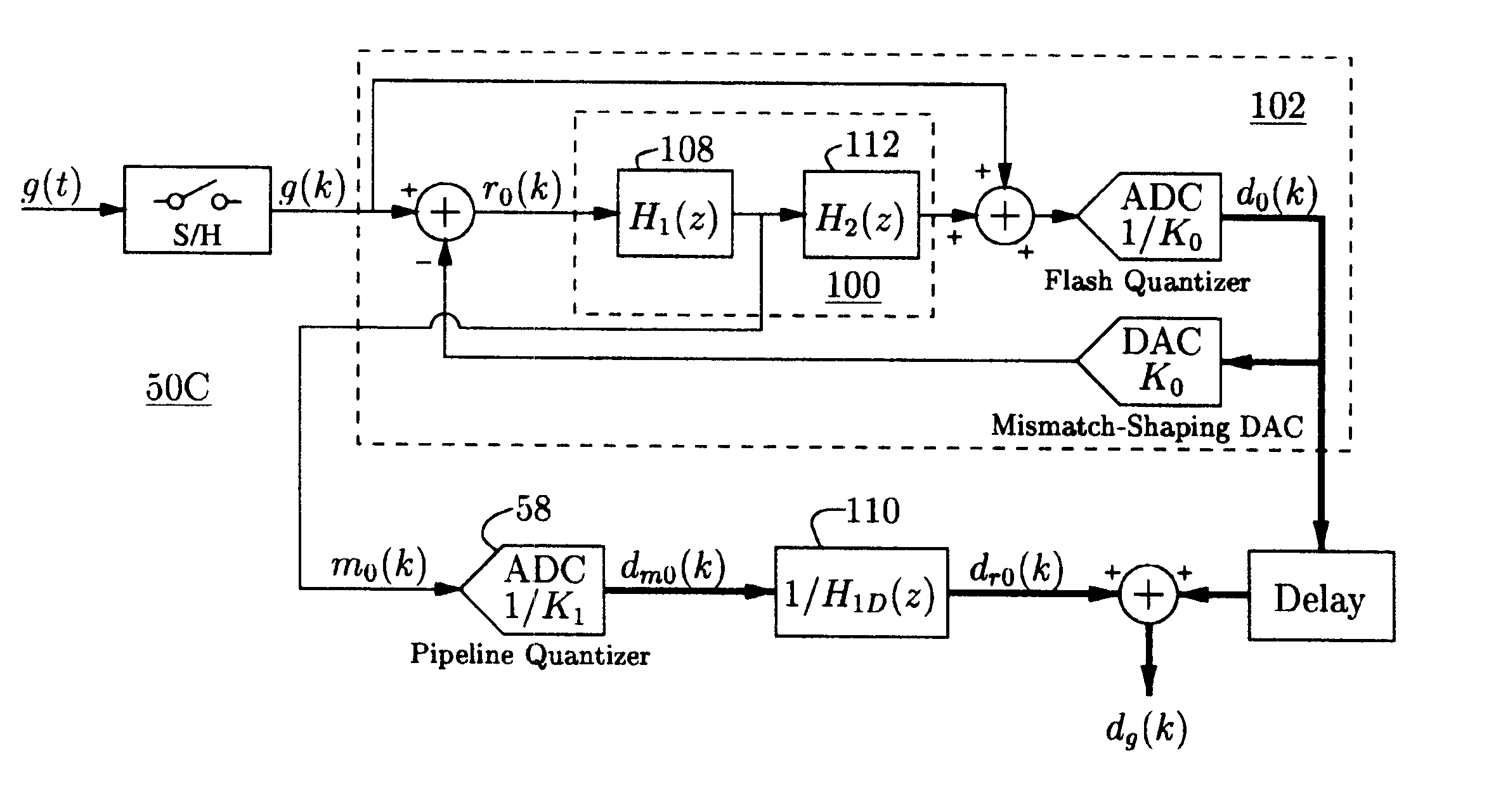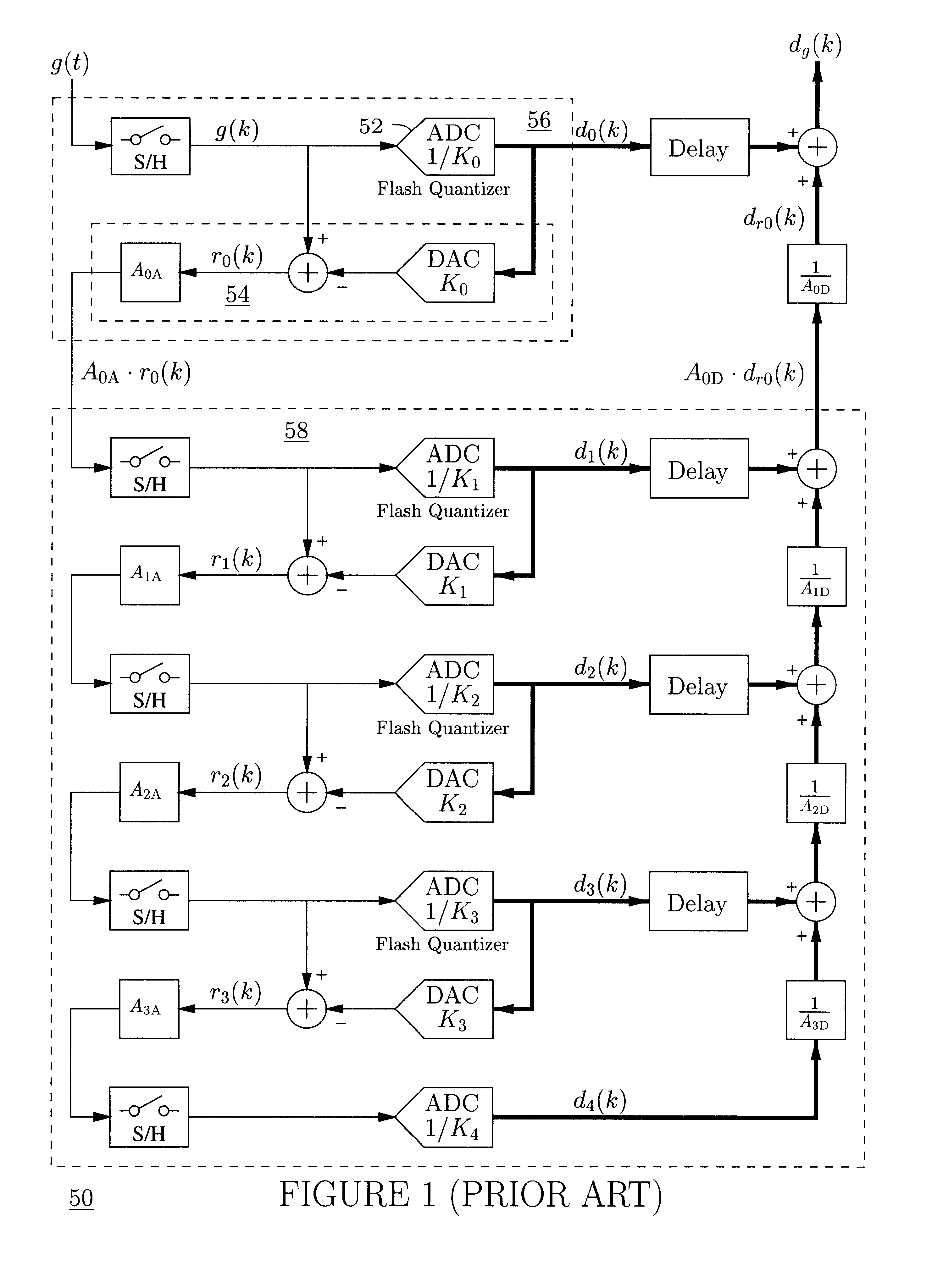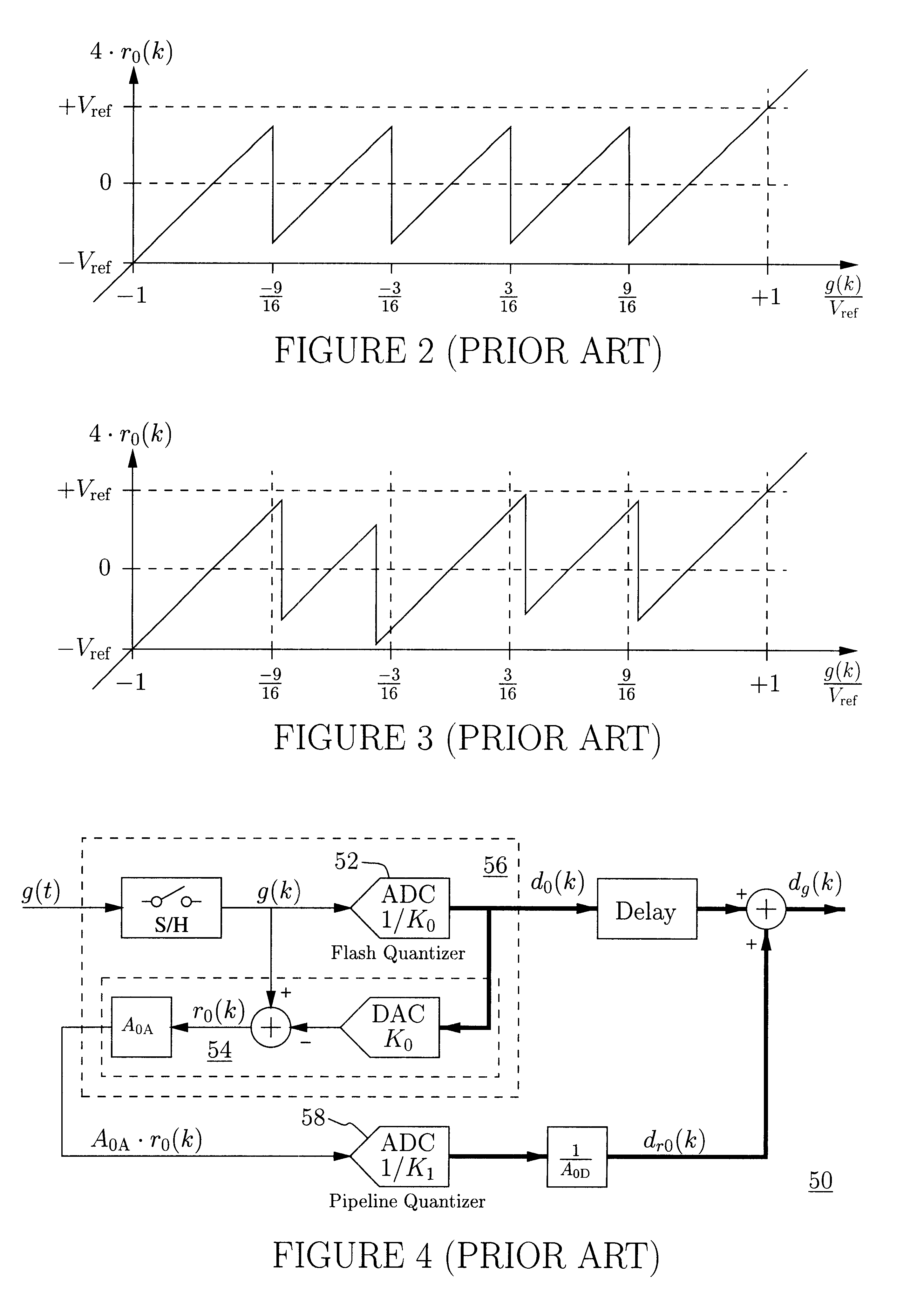Residue-compensating A/D converter
a dc converter and adc technology, applied in the field of data conversion, can solve the problems of circuit electrical properties to drift, low reliability, and low availability of high-performance adcs for xdsl modems,
- Summary
- Abstract
- Description
- Claims
- Application Information
AI Technical Summary
Benefits of technology
Problems solved by technology
Method used
Image
Examples
first embodiment
Consider FIG. 8, which shows a modified version [56A] of the pipeline ADC's [50] input stage [56]. The objective of the modified input stage [56A] is to uncorrelate from the input signal the errors caused by mismatch of the DAC capacitors [66], i.e., to convert distortion errors into a noise-like error signal. This objective is achieved by inserting a mismatch-shaping encoder [74] in between the flash quantizer [52] and the DAC's voltage buffer [64]. The mismatch-shaping encoder [74] merely interchanges the order of the four boolean values, x.sub.0, x.sub.1, x.sub.2, and x.sub.3, to generate another sequence, y.sub.0, y.sub.1, y.sub.2, and y.sub.3, of the same boolean values. In other words, y.sub.0 y.sub.1 y.sub.2 y.sub.3 is a permutation of x.sub.0 x.sub.1 x.sub.2 x.sub.3. The operation of permuting x.sub.0 x.sub.1 x.sub.2 x.sub.3 can, e.g., be performed by a rotating multiplexer circuit [76] shown in FIG. 9. The input sequence, x.sub.0 x.sub.1 x.sub.2 x.sub.3, is first rotated by...
second embodiment
ADC circuits produced in large volumes or employed in critical applications (medical, space, etc.) should preferably not rely on calibration and the power consumption should be minimal. These objectives can be achieved by using a first-order (instead of a zero-order) mismatch-shaping encoder [74] in the modified input stage [56A]. Several first-order mismatch-shaping encoders have been invented and disclosed in the past 10 years (see, e.g., the following U.S. Pat. No. 5,138,317 to Story, U.S. Pat. No. 5,221,926 to Jackson, U.S. Pat. No. 5,404,142 to Adams, and U.S. Pat. No. 5,684,482 to Galton). However, these encoders either suffer from an idle-tone problem (i.e., from mismatch-induced spurious tones, which are as undesirable as tones caused by harmonic distortion), or they have a poor spectral-shaping efficiency at high frequencies. A particularly simple, highly-efficient, and idle-tone-free family of mismatch-shaping encoders was described by Steensgaard in "Idle-Tone Free Mismat...
third embodiment
As discussed above concerning the first embodiment, errors representing themselves as spurious tones are generally significantly more deleterious than noise-like errors. It is, therefore, an objective to convert r.sub.0 (k) into a noise-like signal, whereby mismatch of the gain factor A.sub.0A will become much less of a problem. This objective can be achieved by dithering the flash quantizer [52] as shown in FIG. 17. The dithered flash quantizer [88] conceptually is implemented by adding a random signal p.sub.0 (k) to g(k), the sum of which is quantized by the flash quantizer [52]. The dithered quantizer [88] will nominally be absolutely linear, however noisy, if the random signal's p.sub.0 (k) probability is uniformly distributed in a range which is as wide as the difference between two of the flash quantizer's [52] neighboring threshold voltages. FIG. 18 shows how the dithered flash quantizer [88] can be implemented. Instead of directly adding p.sub.0 (k) to g(k), the negative of ...
PUM
 Login to View More
Login to View More Abstract
Description
Claims
Application Information
 Login to View More
Login to View More - R&D
- Intellectual Property
- Life Sciences
- Materials
- Tech Scout
- Unparalleled Data Quality
- Higher Quality Content
- 60% Fewer Hallucinations
Browse by: Latest US Patents, China's latest patents, Technical Efficacy Thesaurus, Application Domain, Technology Topic, Popular Technical Reports.
© 2025 PatSnap. All rights reserved.Legal|Privacy policy|Modern Slavery Act Transparency Statement|Sitemap|About US| Contact US: help@patsnap.com



